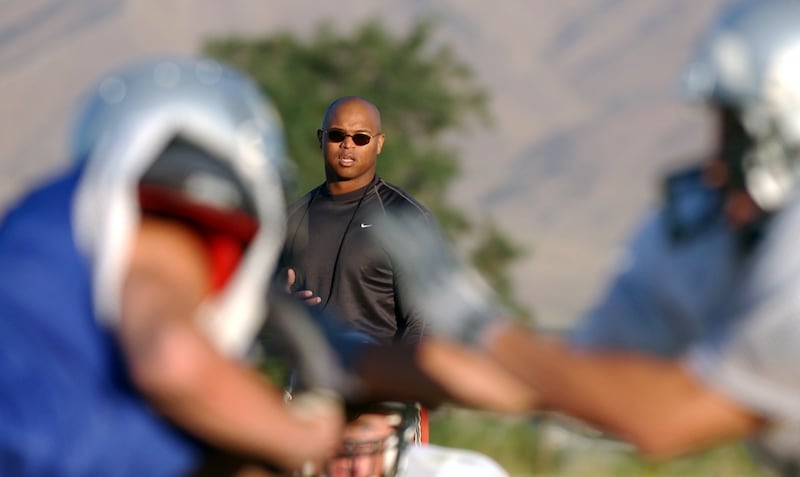
NIL
Trump Executive Order on College Sports Would Create New Legal Issues
President Donald Trump is reportedly weighing the issuance of an executive order that would attempt to place restrictions on college athlete compensation. The president’s interest follows conversations with two former coaches: Nick Saban and U.S. Senator Tommy Tuberville (R-Ala.). Any executive order that restricts athletes, schools, conferences or the NCAA would encounter a bevy of […]

President Donald Trump is reportedly weighing the issuance of an executive order that would attempt to place restrictions on college athlete compensation. The president’s interest follows conversations with two former coaches: Nick Saban and U.S. Senator Tommy Tuberville (R-Ala.).
Any executive order that restricts athletes, schools, conferences or the NCAA would encounter a bevy of problems since it would interact, and possibly conflict, with multiple areas of federal and state laws. It could also pose problems for the NCAA as it waits for U.S. District Judge Claudia Wilken to grant or deny final approval of the House, Carter and Hubbard antitrust litigations.
An executive order would likely be pitched as providing stable and predictable rules for compensating college athletes. For instance, an order that says college athletes cannot be recognized as employees would sound simple enough.
Except in the law, nothing is simple and that certainly is true of employment.
For starters, an executive order can’t conflict with a federal statute. If a court finds that college athletes are employees within the meaning of the National Labor Relations Act or the Fair Labor Standards Act, they will be employees. If a court finds they aren’t employees under those laws, then they aren’t employees.
Then there are state laws governing labor and employment. An executive order can’t compel a state to interpret its own laws a certain way. In Johnson v. NCAA, for example, the athletes argue they are employees within the meaning of the FLSA and applicable state laws, such as the New York Labor Law, the North Carolina Wage and Hour Act, the Connecticut Minimum Wage Act and the Arizona Minimum Wage Act. Or take whether athletes at public universities are employees who can unionize. That’s a question for state law, not federal law. An executive order can’t cast away state claims or accompanying states’ rights.
The same goes for the prospect of Trump issuing an edict on name, image and likeness.
NIL, as its typically called, is often portrayed as a new legal right for college athletes, but that’s an erroneous depiction. NIL is a subset of the right of publicity, which is a matter of state laws (there is no federal right of publicity) and which forbids the commercial use of another person’s identity—be it their NIL or perhaps their voice, mannerisms, signature or other characteristics that make them unique—without their consent. In the college sports parlance, “NIL” is best understood as removing an NCAA eligibility restraint on college athletes to use a right they already had (the right of publicity) under applicable state law.
To be sure, NIL has morphed into a different creature than its early billing. Some NIL collectives, at the behest of schools, have offered recruits what are labeled NIL deals but are better understood as pay-for-play arrangements. Those arrangements substantively violate NCAA rules. The NCAA has tried to curb that practice, but last year a federal judge in Tennessee and Virginia v. NCAA issued a ruling to block the NCAA.
But if approved, the House settlement would create an independent review system for NIL deals that exceed $600. The system would try to ensure these deals are not disguising pay-for-play arrangements. An order by Trump on NIL that is interpretable as conflicting with this independent review model could upend a key settlement term.
Trump could also weigh in on the new horizon of NCAA antitrust litigation: college athletes suing to remain in school so they can earn NIL money and, if the House settlement is approved, a share of media, ticket and sponsorship revenue. Those lawsuits have led to conflicting rulings in different states. Trump might decree that antitrust law be interpreted a certain way in relation to eligibility claims. That type of decree would impact how the Department of Justice, the Federal Trade Commission and other federal agencies interpret antitrust law in the context of college sports, but it wouldn’t stop athletes from continuing to bring private antitrust actions against the NCAA.
It’s been suggested that Congress or Trump needs to intervene to prevent college sports from morphing into pro sports. Often that viewpoint erroneously blames the U.S. Supreme Court’s decision in NCAA v. Alston. Remember, Alston had nothing to do with NIL or paying college athletes to play sports. It concerned the peripheral issue of NCAA rules restricting how colleges compensate athletes for education-related expenses. Many of the justices who voted against the NCAA in Alston expressed worry about the commercialization of college sports. That could foretell how the justices would rule on antitrust cases regarding NIL or paying athletes to play sports. Alston is not an especially persuasive reason for Trump to intervene.
There are also potential constitutional problems with a Trump executive order on college sports. It could run afoul of Equal Protection if college athletes are denied the same rights, including for employment and other economic opportunities, that their classmates enjoy. An executive order might also run afoul of the First Amendment to the extent it limits how college athletes express themselves.
Trump might be well served by meeting with other stakeholders, including those whose opinions and viewpoints aren’t necessarily aligned with retired college coaches.
Paul McDonald, who is counsel to the plaintiff athletes in Johnson, told Sportico he’d “welcome the opportunity to speak with the President about NCAA reform.” A graduate of Princeton University and NYU School of Law, McDonald believes Trump would listen to him and find his athlete-focused viewpoint persuasive.
“I believe the President–and any reasonable Republican or Democrat–would support college athletes having the same, limited student employee status as classmates selling popcorn at NCAA games,” McDonald said. “Equal treatment to classmates in Work Study-style student employment, including student employees on academic scholarship, is consistent with Equal Protection, easy to implement using NCAA-mandated timesheets, and affordable on hourly, minimum wage scales–particularly if colleges stop overpaying some coaches. Colleges have never explained why they oppose this easy, and equitable, solution.”
(The quote in the final paragraph from Paul McDonald was incorrectly attributed in an earlier version of the story.)
NIL
College sports lurches forward, hoping to find a level playing field with fewer lawsuits
MIRAMAR BEACH, Fla. (AP) — On the one hand, what this new version of cash-infused college sports needs are rules that everybody follows. On the other, they need to be able to enforce those rules without getting sued into oblivion. Enter the College Sports Commission, a newly created operation that will be in charge of […]
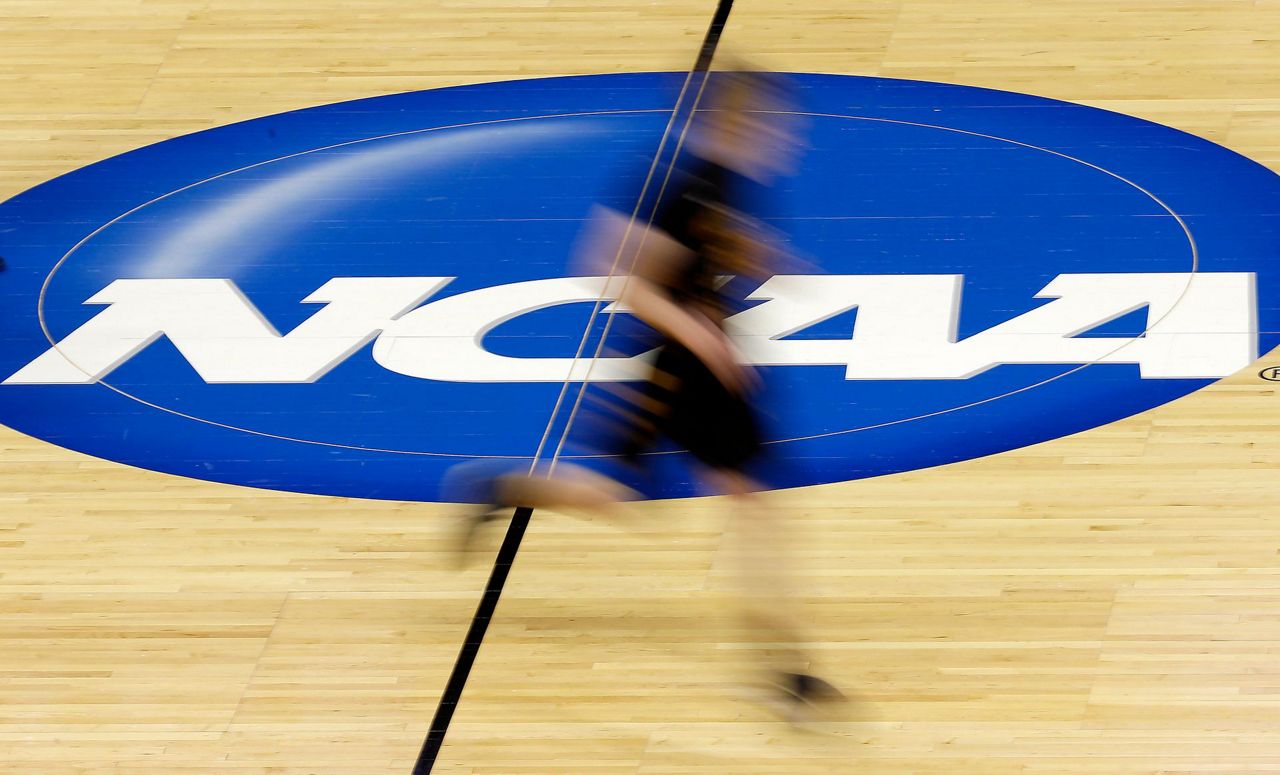
MIRAMAR BEACH, Fla. (AP) — On the one hand, what this new version of cash-infused college sports needs are rules that everybody follows.
On the other, they need to be able to enforce those rules without getting sued into oblivion.
Enter the College Sports Commission, a newly created operation that will be in charge of counting the money, deciding what a “fair market” deal for players looks like and, if things go well, helping everyone in the system avoid trips to court whenever a decision comes down that someone doesn’t like.
With name, image, likeness payments taking over in college, this group will essentially become what the NCAA committee on infractions used to be – the college sports police, only with the promise of being faster, maybe fairer and maybe more transparent.
In a signal of what the CSC’s most serious mission might be, the schools from the four biggest conferences are being asked to sign a document pledging not to rely on state laws – some of which are more permissive of payments to players — to work around the rules the commission is making.
“We need to get out of this situation where something happens, and we run to our attorney general and file suit,” said Trev Alberts of Texas A&M, one of 10 athletic directors who are part of another group, the Settlement Implementation Committee, that is helping oversee the transition. “That chaos isn’t sustainable. You’re looking for a durable system that actually has some stability and ultimate fairness.”
In this new landsacpe, two different companies will be in charge of two kinds of number crunching.
The first, and presumably more straightforward, is data being compiled by LBi Software, which will track how much schools are spending on every athlete, up to the $20.5 million cap each is allowed to distribute in the first year of the new arrangement expected to begin July 1.
This sounds easy but comes with the assumption that universities – which, for decades, have sought to eke out every edge they can, rulebook or no – will provide accurate data.
“Over history, boosters have looked for ways to give their schools an advantage,” said Gabe Feldman, a sports law professor at Tulane. “I think that will continue even with the settlement. It’s anyone’s guess as to how that manifests, and what the new competitive landscape looks like.”
Adding some level of transparency to the process, along with the CSC’s ability to deliver sanctions if it identifies cheaters, will be key to the new venture’s success.
“There’s legal risk that prohibits you from doing that,” Alberts said. “But we want to start as transparent as we can be, because we think it engenders trust.”
Good intentions aside, Alberts concedes, “I don’t think it’s illogical to think that, at first, it’s probably going to be a little wonky.”
Some of the wonkiest bookkeeping figures to come from the second category of number crunching, and that involves third-party NIL deals. The CSC hired Deloitte to run a so-called clearinghouse called “NIL Go,” which will be in charge of evaluating third-party deals worth $600 or more.
Because these deals aren’t allowed to pay players simply for playing – that’s still technically forbidden in college sports — but instead for some service they provide (an endorsement, a social media shoutout and so forth), every deal needs to be evaluated to show it is worth a fair price for what the player is doing.
In a sobering revelation, Deloitte shared with sports leaders earlier this month that around 70% of third-party deals given to players since NIL became allowable in 2021 would have been denied by the new clearinghouse.
All these valuations, of course, are subject to interpretation. It’s much easier to set the price of a stock, or a bicycle, than the value of an athlete’s endorsement deal. This is where things figure to get dicey. Though the committee has an appeals process, then an arbitration process, ultimately, some of these cases are destined to be challenged in court.
“You’re just waiting to see, what is a ‘valid business purpose’ (for an NIL deal), and what are the guidelines around that?” said Rob Lang, a business litigation partner at Thompson Coburn who deals with sports cases. “You can see all the lawyer fights coming out of that.”
In fact, elements of all this are ripe to be challenged in court, which might explain why the power conferences drafted the document pledging fealty to the new rules in the first place.
For instance, Feldman called a law recently enacted in Tennessee viewed by many as the most athlete-friendly statute in the country “the next step in the evolution” of state efforts to bar the NCAA from limiting NIL compensation for athletes with an eye on winning battles for recruits and retaining roster talent.
“What we’ve seen over the last few years is states trying to one-up each other to make their institutions more attractive places for people to go,” he said. “This is the next iteration of that. It may set up a showdown between the schools, the NCAA and the states.”
Greg Sankey, the commissioner of the Southeastern Conference, said a league spanning 12 states cannot operate well if all those states have different rules about how and when it is legal to pay players.
The SEC has been drafting legislation for states to pass to unify the rules across the conference. Ultimately, Sankey and a lot of other people would love to see a national law passed by Congress that does that for all states and all conferences.
That will take months, if not years, which is why the new committee drafted the document for the schools to sign.
“We are all defendant schools and conferences and you inherently agree to this,” Alberts said of the document. “I sat in the room with all of our football coaches, ‘Do you want to be governed?’ The answer is ‘yes.’”
___
AP college sports: https://apnews.com/hub/college-sports
Copyright 2025 The Associated Press. All rights reserved. This material may not be published, broadcast, rewritten or redistributed without permission.
NIL
Boston Red Sox should just call up the prospects and let them play
John Rooke | Special to The Providence Journal Marcelo Mayer video heading to Boston The Boston Red Sox called up prospect Marcelo Mayer on May 24, 2025. Ryan DeSantis The Red Sox are struggling with a .500 record despite Garrett Crochet’s strong pitching performance. The team’s underperformance is attributed to a combination of injuries, lack […]

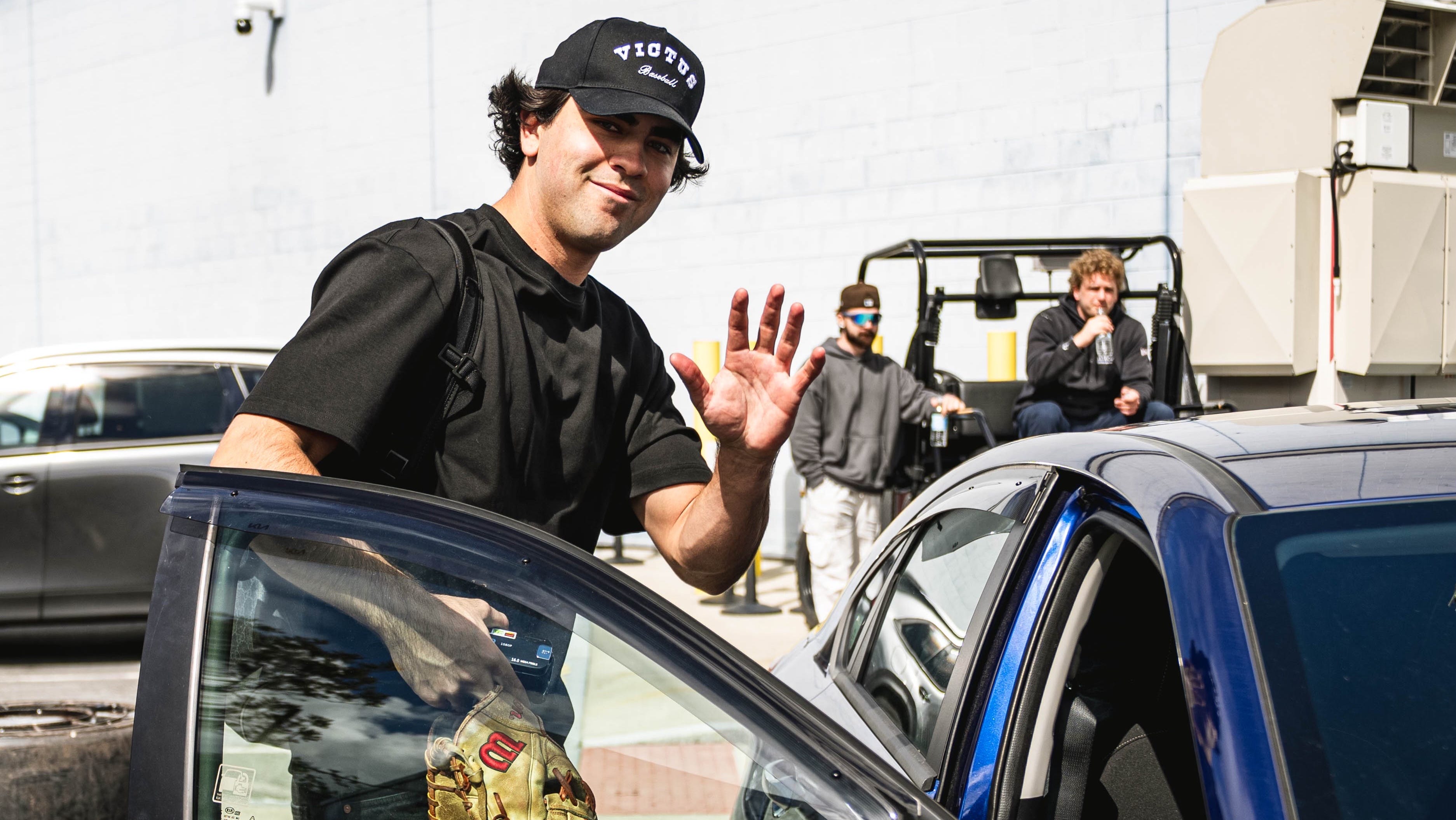
Marcelo Mayer video heading to Boston
The Boston Red Sox called up prospect Marcelo Mayer on May 24, 2025.
Ryan DeSantis
- The Red Sox are struggling with a .500 record despite Garrett Crochet’s strong pitching performance.
- The team’s underperformance is attributed to a combination of injuries, lack of production from veterans, and questionable managerial decisions by Alex Cora.
- The article also touches upon other sports news, including NIL deals, college basketball scheduling, and the NBA playoffs.
Thinking out loud…while wondering if baseball managers and diapers should both be changed regularly for the same reason…
X post of the Week, from @Jared_Carrabis: “The fact that the Red Sox are .500 (6-6) in Garrett Crochet starts when he’s rocking a 2.04 ERA takes the whole .500 Sox thing to a new level.”
Oh, and here’s another gem… Crochet has allowed six hits in the 12 lead-off at bats he’s faced in his Red Sox starts. Two of those were first-pitch-of-the-game home runs. So, it’s not just a lack of support. It’s a lack of baseball common sense.
What are we doing here? Short of letting Alex Cora go… which is unlikely thanks to his offseason contract extension…it’s time to perform a full makeover on the Boston Red Sox and figure out how to fix this mess of a season.
Cue the annual cry of “they’re ruinin’ my summah!’ And summah hasn’t even started yet.
Marcelo Mayer is predictably struggling early in the wake of Alex Bregman’s unfortunate boo-boo. Kristian Campbell’s talents are fading faster than your new pair of jeans. But the younger guys get the benefit of any doubt…because they’re young and not jaded by selfishness or mysterious injuries. At least not yet. Let’s call up the kids and let them play.
We’re past the stage of waiting on veterans to produce. By this time, they either can’t or won’t. Tristan Casas, Trevor Story, Connor Wong, David Hamilton, Rafael Devers’ aversion to picking up a glove, the entire pitching staff… sure, injuries are a factor in the lack of production, but even when healthy none of these guys carried his own load, much less that of others missing in the lineup.
And none other than Hall of Famer Jim Rice, who sits in NESN’s TV studio watching over Red Sox nation like a man who knows – he likely does – and has suggested the team stop being something they aren’t. They’ve lost their power. Play small(er) ball. Maybe a guy with his credentials should have a bit more attention paid to his observations.
Back to Devers for a moment. Please. He’s driven in some runs. But he’s coasting, because the manager ‘has his back.’ He won’t play where he’s needed, for the good of the team. And you will support that thought every time you go to Fenway.
Not for nuthin,’ but Cora is coasting, too. He’s got a head-scratcher of a decision going for him nearly every game. Pulling pitchers early. Leaving them in too long. Refusing to consider positional moves that could benefit the team. There are a hundred games left to play, but there might as well be a million.
He’s checked out. He’s trying to squeeze a square peg into the round hole in front of him.
Why is this team waiting on calling up Roman Anthony? There’s nowhere to put a guy with a near-four-digit OPS into your lineup? The best possible lineup has yet to be put in play this season by Cora and/or Craig Breslow, for one reason or another.
Here’s the SOS. Save Our Season. Call up all the kids. Let ‘em learn on the job. Let’s get a glimpse of what might still be someday, to see if they can play the game… and figure out if there is any shred of recognizable baseball intelligence still within the front office that doesn’t rely on a slide rule.
If you’re not firing the manager, and you can’t fire all the players (even if they’re deserving), that’s what’s left of our summah.
Remember this as you’re singing “Sweet Caroline” after the All-Star break at Fenway, having just paid $100 to park, $200+ for tickets and these darned Sox are already out of postseason contention.
∎And keep laughing, Yankee fan. You haven’t won anything yet. But you do have a lead over Boston. Looks like you’ll keep it, too.
∎My buddy “Big E” sez the amount of self-control it takes to NOT say what’s on his mind is so immense…he needs a nap afterward.
∎ICYMI: Big 12 schools received a record $500 million in revenue for the 2023-24 school year. But ACC schools also received all-time shares from their media contracts, placing third behind the Big Ten and SEC. As US District Judge Claudia Wilken continues to consider the NCAA House settlement, attorneys representing the NCAA have revised plans for walking back the number of roster spots per sport that could be lost in the deal. Any new plan would be optional for schools to follow. As an athlete’s eligibility expires, in some sports, those roster spots would be rolled back.
So far, the Big Ten, SEC, Big 12 and ACC have all agreed to support this “grandfathered” approach to roster limits.How big is NIL these days? The latest example is 6-9 Yaxel Lendeborg – a potential first-round NBA Draft pick – deciding to return to college to play at Michigan. He played at Alabama-Birmingham a year ago. And even the last pick of the first round is projected to sign for $14.1 million.
∎Likely not in the same financial category, but you never know… Fall River’s Joson Sanon announced he’s withdrawing from the NBA Draft and will head to St. John’s for next season.
∎Scheduling tidbits: A great idea – UConn’s men and women will face Boston College’s men and women in an Oct. 13 exhibition double-header at Mohegan Sun; the Friars will open Nov. 3 against Holy Cross, and play a second game at Mohegan Sun, against Virginia Tech… with a Hall of Fame Game already scheduled for the casino against Penn State. Kentucky will host Georgetown in an exhibition game on Oct. 30.
∎Villanova and new coach Kevin Willard will open the college season Nov. 3 against super-freshman A.J. Dybantsa and BYU… while UConn will reportedly face BYU in November at TD Garden in Boston. Creighton and St. John’s are likely headed for Vegas and the Players’ Era NIL tourney.
∎Providence head coach Kim English held a Zoom Q&A chat with PC season ticket holders and media this week – of note, Corey Floyd was considering a transfer. English told him, “no you’re not.” Sez a lot, doesn’t it? And the Friars won’t be home to open the next three years with ComiCon being held at the AMP and Convention Center.
∎Speaking of Friar hoop, Shaun Brown is the new strength and conditioning/High Performance coach for the men’s basketball team, replacing Chase Campbell who resigned last month. Brown was head strength coach at PC from 1989-92 while Rick Barnes was head coach and was also later the strength coach for the Celtics, and most recently at West Virginia.
∎First-year Bryant coach Jamion Christian has three new portal additions that will likely be leaned on, heavily, as the Bulldogs attempt to defend their America East title. Fifth year forward James Cooper, who stands 6-8, transfers from Oregon, 6-8 small forward Quincy Allen comes from Chicago State and 6-2 point guard Jayhlon Young moves to Smithfield from College Park, MD.
∎Not sure why Al Horford wants to keep playing at this stage of his life. We’ve heard what he’s said but now is as good a time to retire as any, unless he simply needs the money. Is that even possible? I will say this – for a team that will face certain challenges next season, Horford can often be a steadying presence. But is that good enough?
∎Show of hands here – who is surprised at the Knicks getting Knocked around by the Pacers in the NBA Eastern Conference finals?
∎Speaking of knocks… the Buffalo Bills get the feature slot on HBO’s “Hard Knocks” once NFL training camp rolls around. And the in-season version of the show will focus on the NFC East division, as 2025 will be the first season of a new, multi-year deal between NFL Films and HBO.
∎What’s the big deal over Patriots’ WR Stefon Diggs’ party video on a boat with some pink powder? He missed a voluntary Organized Team Activity? You knew what you were signing up for when you brought him in, didn’t you? Didn’t you?
∎Has Jordon Hudson had her 15 minutes of fame, yet? Apparently not – a quick search for North Carolina football brings up the latest in rumor and innuendo surrounding coach Bill Belichick’s girlfriend. I’ll say this – I have interest in Tar Heel football this fall for the first time. Like ever.
∎We should be so proud. Bookies.com just released a survey of the NFL’s most foul-mouthed fans… based on the profanity they’ve used on social media. It’s the only thing the J-E-T-S have been good at in more than 50 years, but Patriot fans rank fourth out of 32 teams, behind the NYJ, Eagles and Bills.
∎URI baseball is downright offensive. But that’s a good thing. The Rams’ offense was primarily responsible for Rhody winning the Atlantic-10 regular season and tournament championships, placing them in Baton Rouge, Louisiana this weekend for the NCAA regionals.
The Rams’ 3-seed in the four-team regional is their highest seed achieved in their third NCAA appearance. The offense averages better than nine runs per game and ranks in the national Top 15 in multiple categories – walks, hits, on-base percentage, runs scored, runs per game and triples.
It has been a solid spring for baseball in Rhode Island. Bryant won the America East regular-season title but lost in extra innings to Binghamton in the conference tournament championship game and missed out on the NCAAs. At the Division III level, Salve Regina and Johnson & Wales both reached the NCAA Tournament, with the Seahawks coming one win away from qualifying for a second straight World Series.
Sorry, Boston. I know Northeastern also made the NCAAs, but at least we can play baseball at a consistently high level around here. Just sayin’.
Interested in having your questions on Rhode Island sports (and yes, that includes the Patriots, Red Sox, Bruins, and Celtics) answered in a somewhat timely fashion? Think out loud and send your questions, comments, and local stories to jrbroadcaster@gmail.com. We’ll share mailbag comments right here! Join me on Twitter/X, @JRbroadcaster…and on Instagram and Threads @JRbroadcaster.
NIL
NiJaree Canady Becomes First Million-Dollar Softball Player
Texas Tech softball’s NiJaree Canady has made history as the first female college athlete to secure a $1 million NIL contract, valued at $1,050,024 for a year with the Matador Club following her transfer from Stanford. This groundbreaking commitment has propelled Texas Tech to unprecedented success, including their first NCAA Women’s College World Series appearance. […]
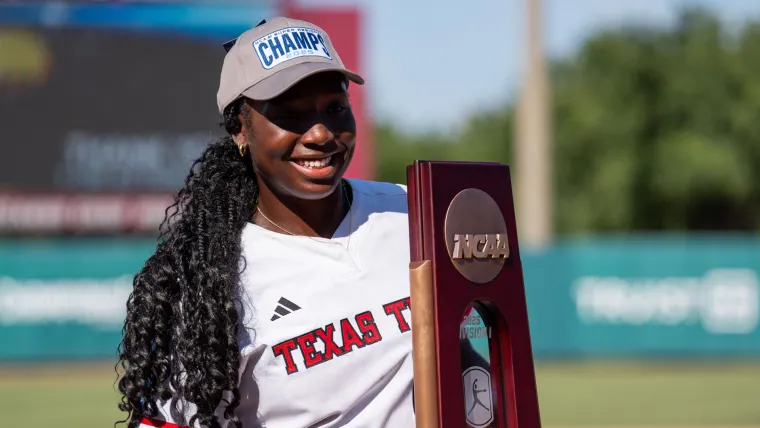
Texas Tech softball’s NiJaree Canady has made history as the first female college athlete to secure a $1 million NIL contract, valued at $1,050,024 for a year with the Matador Club following her transfer from Stanford. This groundbreaking commitment has propelled Texas Tech to unprecedented success, including their first NCAA Women’s College World Series appearance. Canady, recognized for her pitching prowess, has not only led the Red Raiders to a program-record 50 wins but has also achieved significant individual accolades in her debut season. Her transition to Texas marks a transformative era in women’s college sports compensation.
By the Numbers
- $1,050,024: Value of Canady’s NIL contract, marking a million-dollar milestone for female college athletes.
- 50: Program-record wins by Texas Tech before the NCAA Women’s College World Series.
- 337: Strikeouts recorded by Canady in 2024, leading in college athletics.
State of Play
- Texas Tech has reached the NCAA Tournament and Women’s College World Series for the first time since 2019.
- Canady is a finalist for USA Softball Collegiate Player of the Year after an outstanding season.
What’s Next
With her junior season continuing, Canady may elevate her profile further, potentially leading to enhanced NIL opportunities and setting new benchmarks for female collegiate athletes.
Bottom Line
Canady’s success represents a pivotal shift in women’s college sports, demonstrating significant market potential for top athletes and pushing the boundaries of athlete compensation in the NIL landscape.
NIL
Why this former BYU player doesn’t like what’s happening to high school athletes – Deseret News
What’s happening to high school and junior college recruiting in the wake of the transfer portal and NIL in college sports is a travesty. So says a former Dixie Junior College star who played with Heisman winner Ty Detmer at BYU and sent a son, Jaren Hall, to the NFL via BYU. Kalin Hall is […]
What’s happening to high school and junior college recruiting in the wake of the transfer portal and NIL in college sports is a travesty.
So says a former Dixie Junior College star who played with Heisman winner Ty Detmer at BYU and sent a son, Jaren Hall, to the NFL via BYU.
Kalin Hall is taking his love for coaching young men from Maple Mountain High to Snow College in Ephraim, Utah, where Badgers head coach Zac Erekson will deploy him as director of football operations and running backs coach.

Special Collector’s Issue: “1984: The Year BYU was Second to None”
Get an inclusive look inside BYU Football’s 1984 National Championship season.
Hall has been an energetic, beloved high school coach at Maple Mountain High and had a community rally behind him this past year when he was released, rehired, and then declined to return.
Hall hates what modern major college sports has done to kids.
“Shame on the NCAA for doing what they did. Shame on athletic directors around the country for collectively making the financial decisions they’ve made,” said Hall, decrying the reduction of roster spots, dismissing walk-on programs, and robbing high school players of opportunities to play and prove themselves.
Hall was referring to changes to scholarship caps in college sports, which are laid out in the landmark House settlement. Although the settlement has not yet been approved, many schools have already adjusted their programs to fit its conditions, including by making cuts.
“It’s not only the transfer portal that’s hurt, but the 105 because within that, those additional 20 kids, those who would have been preferred walk-ons, do not have a chance to mature because schools are no longer handcuffed,” said Hall.
Of course, what started all of this were the lawsuits by athletes to get paid when schools used them to produce truckloads of money through ticket sales and TV contracts.
It’s today’s college sports and it’s been force-fed to everyone.
Hall said today’s climate has put college coaches in a hopeless position. They have to win now. Should they put their job on the line and risk it all for a kid you can develop over time by signing a high school player, or do they make a more informed choice and take a transfer from the portal?
“I feel so bad for the high school kids,” Hall said.
Earlier this spring he spoke to University of Utah running back coach Mark Atuaia about a prospect. He told Hall the kid was someone they’d normally have taken a shot on at the P4 level and brought him in as a preferred walk-on. Then, in a year or two, he’d have become a player. “But we can’t do that anymore. We don’t have the time,” the coach told Hall.
Now Hall will see the same challenges for kids at Snow, a national juco football powerhouse.
He’s excited to teach and help young men, just like he did at Maple Mountain. His real job, however, is working with former BYU tight end Gabe Reid at PureEnviro Management as vice president. The company manages issues with government departments in Utah, nationally, and does work in the South Pacific.
Erekson has tried to get Hall to work with him at Snow for years.
“Zac is like my little brother,” said Hall. “I’ve known Zac since he was 7 years old and we’ve been close family friends for years.”
Hall said his boss, Reid, told him he should go to Ephraim and give his time — it isn’t a financial decision at all — but one of love.
“He said to go and share some of my ancient wisdom.”
“I’ve spent a lot of time working with kids at BYU, Utah and Utah State, a lot of local kids, but this will be a little different. As a former JC kid myself, playing more than 30 years ago at Dixie, I understand the dynamics.
“But millennials are different today and young people are different. I was there at Snow for spring ball and it was fun. I’m the older guy out there, there is only one other guy that is older than me, the defensive coordinator, working with Zac.”
Hall said Snow expects to play high-quality football again this coming season.
What about his son Jaren, who was drafted out of BYU by the Vikings before going to Seattle?
Well, he just turned down an offer from the Jacksonville Jaguars, said the father.
“He’s just waiting for the right opportunity. Very few guys turn down opportunities, but he turned one down last week. He didn’t want to go to Jacksonville. He just didn’t think it was right for him. He was inspired religiously that it wasn’t the right move. So he’s a better man than I am, because I would have been in Florida.”
Hall praised Jaren for his maturity and faith in looking for an inspired move in his next landing.
“He’s a better dude that I am. As a dad, I had to back up and tell him that he was my idol and I’m sorry for trying to influence him to take the Jacksonville job when he was prompted spiritually to wait for something else in his life.”

NIL
College sports lurches forward, hoping to find a level playing field with fewer lawsuits
By EDDIE PELLS MIRAMAR BEACH, Fla. (AP) — On the one hand, what this new version of cash-infused college sports needs are rules that everybody follows. On the other, they need to be able to enforce those rules without getting sued into oblivion. Enter the College Sports Commission, a newly created operation that will be […]
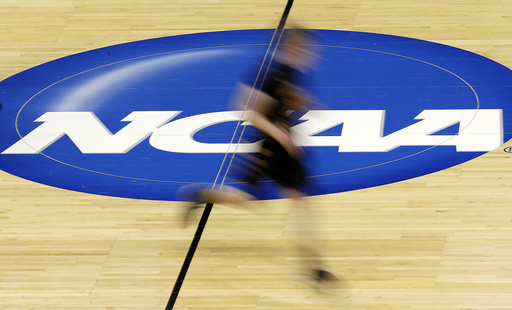
By EDDIE PELLS
MIRAMAR BEACH, Fla. (AP) — On the one hand, what this new version of cash-infused college sports needs are rules that everybody follows.
On the other, they need to be able to enforce those rules without getting sued into oblivion.
Enter the College Sports Commission, a newly created operation that will be in charge of counting the money, deciding what a “fair market” deal for players looks like and, if things go well, helping everyone in the system avoid trips to court whenever a decision comes down that someone doesn’t like.
With name, image, likeness payments taking over in college, this group will essentially become what the NCAA committee on infractions used to be – the college sports police, only with the promise of being faster, maybe fairer and maybe more transparent.
In a signal of what the CSC’s most serious mission might be, the schools from the four biggest conferences are being asked to sign a document pledging not to rely on state laws – some of which are more permissive of payments to players — to work around the rules the commission is making.
“We need to get out of this situation where something happens, and we run to our attorney general and file suit,” said Trev Alberts of Texas A&M, one of 10 athletic directors who are part of another group, the Settlement Implementation Committee, that is helping oversee the transition. “That chaos isn’t sustainable. You’re looking for a durable system that actually has some stability and ultimate fairness.”
In this new landsacpe, two different companies will be in charge of two kinds of number crunching.
The first, and presumably more straightforward, is data being compiled by LBi Software, which will track how much schools are spending on every athlete, up to the $20.5 million cap each is allowed to distribute in the first year of the new arrangement expected to begin July 1.
This sounds easy but comes with the assumption that universities – which, for decades, have sought to eke out every edge they can, rulebook or no – will provide accurate data.
“Over history, boosters have looked for ways to give their schools an advantage,” said Gabe Feldman, a sports law professor at Tulane. “I think that will continue even with the settlement. It’s anyone’s guess as to how that manifests, and what the new competitive landscape looks like.”
Adding some level of transparency to the process, along with the CSC’s ability to deliver sanctions if it identifies cheaters, will be key to the new venture’s success.
“There’s legal risk that prohibits you from doing that,” Alberts said. “But we want to start as transparent as we can be, because we think it engenders trust.”
Good intentions aside, Alberts concedes, “I don’t think it’s illogical to think that, at first, it’s probably going to be a little wonky.”
Some of the wonkiest bookkeeping figures to come from the second category of number crunching, and that involves third-party NIL deals. The CSC hired Deloitte to run a so-called clearinghouse called “NIL Go,” which will be in charge of evaluating third-party deals worth $600 or more.
Because these deals aren’t allowed to pay players simply for playing – that’s still technically forbidden in college sports — but instead for some service they provide (an endorsement, a social media shoutout and so forth), every deal needs to be evaluated to show it is worth a fair price for what the player is doing.
In a sobering revelation, Deloitte shared with sports leaders earlier this month that around 70% of third-party deals given to players since NIL became allowable in 2021 would have been denied by the new clearinghouse.
All these valuations, of course, are subject to interpretation. It’s much easier to set the price of a stock, or a bicycle, than the value of an athlete’s endorsement deal. This is where things figure to get dicey. Though the committee has an appeals process, then an arbitration process, ultimately, some of these cases are destined to be challenged in court.
“You’re just waiting to see, what is a ‘valid business purpose’ (for an NIL deal), and what are the guidelines around that?” said Rob Lang, a business litigation partner at Thompson Coburn who deals with sports cases. “You can see all the lawyer fights coming out of that.”
In fact, elements of all this are ripe to be challenged in court, which might explain why the power conferences drafted the document pledging fealty to the new rules in the first place.
For instance, Feldman called a law recently enacted in Tennessee viewed by many as the most athlete-friendly statute in the country “the next step in the evolution” of state efforts to bar the NCAA from limiting NIL compensation for athletes with an eye on winning battles for recruits and retaining roster talent.
“What we’ve seen over the last few years is states trying to one-up each other to make their institutions more attractive places for people to go,” he said. “This is the next iteration of that. It may set up a showdown between the schools, the NCAA and the states.”
Greg Sankey, the commissioner of the Southeastern Conference, said a league spanning 12 states cannot operate well if all those states have different rules about how and when it is legal to pay players.
The SEC has been drafting legislation for states to pass to unify the rules across the conference. Ultimately, Sankey and a lot of other people would love to see a national law passed by Congress that does that for all states and all conferences.
That will take months, if not years, which is why the new committee drafted the document for the schools to sign.
“We are all defendant schools and conferences and you inherently agree to this,” Alberts said of the document. “I sat in the room with all of our football coaches, ‘Do you want to be governed?’ The answer is ‘yes.’”
___
AP college sports: https://apnews.com/hub/college-sports
NIL
How Models & Data Analytics Are Impacting College Baseball Roster Decisions
Image credit: (Photo by Robin Alam/Icon Sportswire via Getty Images) If you wandered the trade show floor at the American Baseball Coaches Association convention in Washington, D.C. this past January, it was impossible to miss the shift. Technology booths sprawled across the space, packed wall-to-wall with screens, devices and demos. One stand measured batted-ball performance, […]
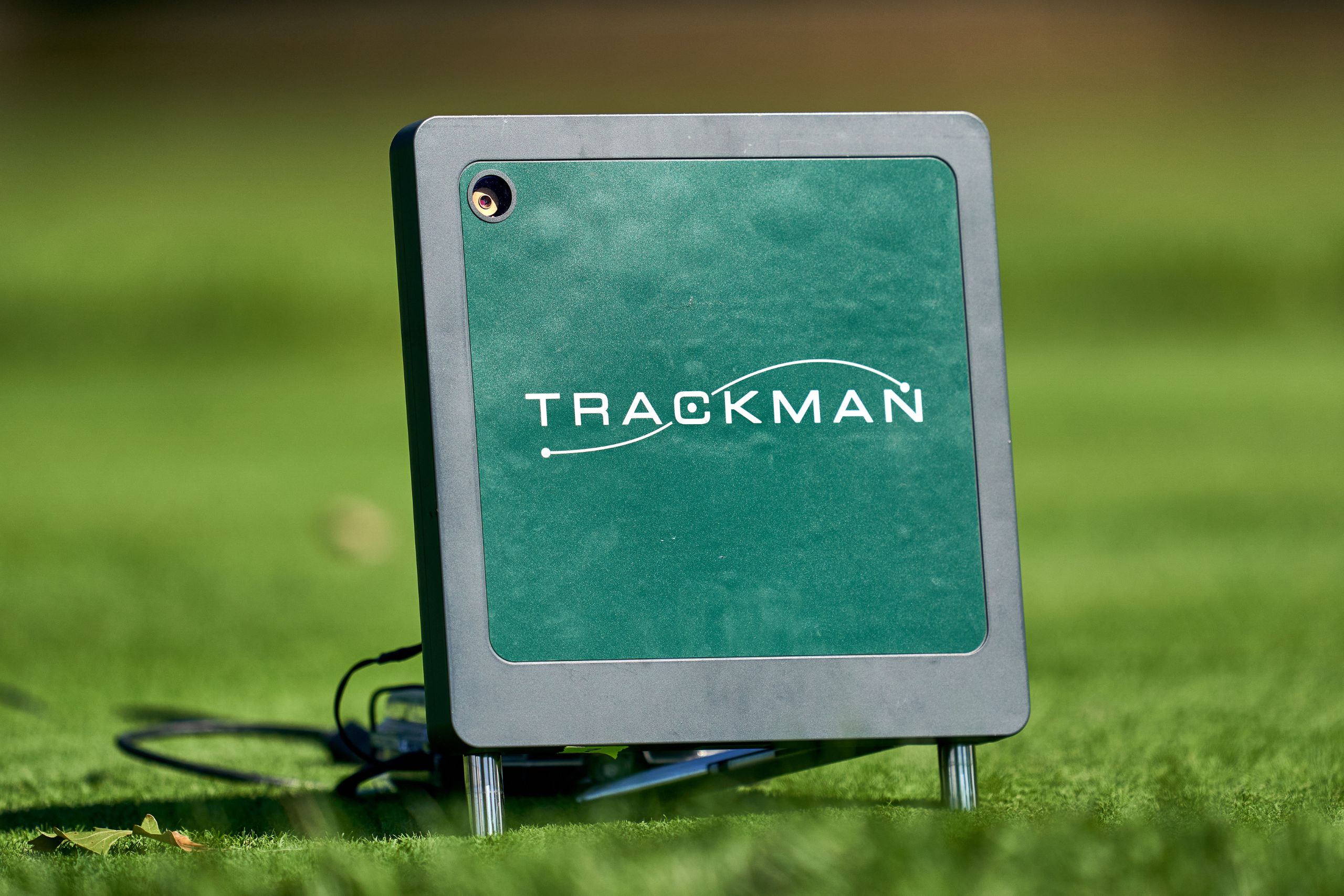
Image credit:
(Photo by Robin Alam/Icon Sportswire via Getty Images)
If you wandered the trade show floor at the American Baseball Coaches Association convention in Washington, D.C. this past January, it was impossible to miss the shift.
Technology booths sprawled across the space, packed wall-to-wall with screens, devices and demos. One stand measured batted-ball performance, another tracked arm force and fatigue. Around the corner, a startup promised real-time insights on UCL health thanks to a device that intricately measured grip strength. Across the aisle, another system proclaimed the ability to map a pitcher’s biomechanics down to the millisecond.
College baseball has fully entered its data age.
“I couldn’t imagine us really doing a full-on player development plan, executing our scouting reports and putting together our scouting reports without the data we have now,” said Jamie Tutko, LSU’s director of pitching development. “We’re literally using it every single day—games, practices, every single pitch.”
That level of integration wasn’t common even a few years ago.
As recently as 2017, when LSU was among the pilot programs to test TrackMan, even staffers weren’t sure what it was or how to use it.
“We were collecting all of the data not really knowing what it was about,” Tutko said. “And me being kind of an old-school type guy when I first got into working in baseball, I wasn’t totally against it, but I was like, ‘I don’t need this. I’ve got a radar gun. I can see with my own eyes.’”
But that skepticism didn’t last. Not for Tutko, and not for the vast majority of his peers.
By 2021, the shift was in full swing across the sport. The explosion of the NCAA transfer portal, the growth of private player development labs and the widening gap between resource-rich and resource-strapped programs accelerated the adoption of data-driven decision making.
“It really started to go wild,” Tutko said of LSU’s integration of data analytics. “We really started to be able to use it and understand it and use it correctly.”
The transition to analytics began around the same time at Wake Forest. Tom Walter, the long-time Demon Deacons coach, recalled the pivotal moment.
“We were one of the first schools to get TrackMan,” he said. “We had it for a year and didn’t use it very well or even understand what it meant, but I challenged our coaching staff. It was like, ‘Let’s become the experts at this.’”
For Wake, it wasn’t just about keeping pace. It was about finding an edge.
It used technology to dive into the pitching lab space, a way to develop arms in their own mold using fact-based feedback derived from an endless supply of numbers.
“I just feel like at Wake Forest, we’re never going to be able to line up and play the same game as some of these schools that have endless resources,” Walter said. “They have more scholarship dollars or better facilities or more resources in the NIL space. So we’ve got to find a competitive advantage.”
That edge evolved into a holistic system—analytics, biomechanics, pitch design, lineup optimization, defensive shifts, even recruiting models.
“We’ve built these systems for evaluating our current players, evaluating recruits, coming up with player development plans and everything in between,” Walter said.
Across the country, programs big and small have followed similar trajectories. At Arizona State, Jared Matheson, a 23-year-old pitching analytics coordinator, represents the sport’s new wave of young minds breaking in through data.
“The analytical side of baseball is on the up and coming,” Matheson said. “Some stuff you want to keep coach-facing, and some stuff you want to keep player-facing. Our guys are all in. They dove in head first and want to learn as much as possible.”
That duality—balancing deep data with digestible player insights—has become central to modern coaching. Where once scouting reports offered vague summaries—“this guy’s 86 to 88 with a slider”—they now detail pitch usage by count, movement profiles, hitter tendencies and much more.
“Now it’s like, ‘Hey, this guy throws 76% fastballs in this count and 36% in this count, and this is what his breaking ball looks like,’” Walter said. “There are no secrets anymore.”
The results are tangible: faster player improvement, more precise game-planning and more efficient recruiting.
But the revolution didn’t happen overnight. Most coaches trace its rapid acceleration to around 2018-19 as TrackMan’s data-sharing network grew. It got another boost a few years later as competitive pressures in the portal era mounted and player expectations evolved.
“There’s more teams in Division I baseball in the TrackMan sharing network than not,” Tutko said. “The amount of data that’s out there is crazy.”
The tools themselves are now ubiquitous—TrackMan, Edgertronic, K-Vest, Kinatrax, Hawkeye, Rapsodo, blast sensors, high-speed cameras and force plates. But as several coaches noted, simply owning the tools isn’t enough.
“It’s one thing to say that ‘Yeah, we have TrackMan’ … But it’s another thing to actually utilize it,” Tutko said. “And we feel like we’re utilizing it just as well as anybody else, if not better than anybody else in the country.”
For those who do, the gains are clear.
“The game is always evolving,” Matheson said. “If you can learn every aspect of data—whether it’s TrackMan or biomechanics—it kind of just puts another feather in your cap. It helps you build your resume and gives you an edge.”
– –
The first part of the equation is the ballpark’s dimensions: 314 feet down the line in right, 365 feet to right-center, 404 straightaway, 370 to left-center and 350 down the line in left.
Next comes the wind. On a neutral day in Athens, a ball struck just north of 90 mph at the proper launch angle will clear the right field wall. A firm line drive in the same direction is likely to find extra bases.
Left field is less forgiving. The prevailing wind blows in from that side, and with deeper dimensions, home runs that way or to center require real force and the right trajectory.
The final variables live inside each player. Air pull rates, average and peak exit velocities, swing planes—metrics that, through two years of refinement, Georgia’s staff has learned to weight and model against their park’s unique characteristics.
When Wes Johnson accepted the Bulldogs’ head coaching job, he understood the challenge in front of him. Georgia wasn’t a historical SEC power. It didn’t carry the built-in recruiting muscle as many of its conference foes.
If the Bulldogs were going to close that gap quickly, they had to be smarter.
“One of the things we worked a ton on, right when I got the job, I had worked really hard and put together a projection model that we used,” Johnson said. “You’ve got to trust the model. If you have enough data, you gotta trust it. That’s one of the things I learned in professional baseball.”
The park itself became a roadmap. Georgia’s staff began running extensive overlays—taking prospective hitters’ batted-ball profiles and mapping them into Foley Field’s layout under typical conditions. Who could play here, not just anywhere?
It was in that process that a name surfaced this past offseason: Robbie Burnett.
A lefthanded hitter out of UNC Asheville, Burnett wasn’t high on portal big boards. In fact, Johnson estimated only two or three schools showed any interest. And even those were lukewarm or came from a lower-major program.
But the Georgia model told a different story. Burnett’s pull tendencies, swing path and raw exit velocity suggested untapped power potential—especially to right field in Athens.
“When we put Robbie’s numbers in our ballpark, we’re like, ‘OK, Robbie can hit 20,’” Johnson said. “I told the staff Robbie will hit 20 for us.”
Burnett had the baseline metrics, and with adjustments, Johnson believed he could thrive.
“All I’ve got to teach this guy is to pull the ball a little more,” Johnson said. “And we’re gonna work on getting his exit velo as high as we can.”
It wasn’t a guess. It wasn’t a hunch. It was data refined into action.
“We’re moneyballing it, is what we’re doing,” Johnson said.
To say that it’s worked would be an understatement. In 53 games leading up to the NCAA Tournament, Burnett batted .318/.492/.732 with 20 home runs, 66 RBIs, 12 doubles and nearly as many walks (41) as strikeouts (48). Seventeen of his 20 homers have come in Athens.
“We knew exactly what we were getting,” Johnson said. “That’s how we’re building this — we want players who fit what this park gives us.”
Of course, such precision has limits. Building to your park means leaning into strengths at home, but it also requires adaptability on the road.
“When I tell people we recruit players to our ballpark, this is what I’m talking about,” Johnson said. “Now, it hurts when you go to Texas, and it’s a big ballpark, or Kentucky. Or the wind’s blowing in.”
That’s where versatility becomes currency. Positional flexibility—especially among hitters—has become a priority in Georgia’s model.
“When guys can play multiple positions, that moves the needle for us,” Johnson said.
What started as a workaround—an effort to compete with bigger brands—has quickly become identity.
“You gotta trust your model or you don’t,” Johnson said. “You’re playing the math.”
At Georgia, that math now drives swings, at-bats, and increasingly, roster decisions.
– –
For all the precision, for all the modeling, for all the numbers on screens and projections in staff meetings, one truth still holds: The game is played by human beings.
Wes Johnson will be the first to say it.
“You’ve got to trust your model,” he said. “But there’s still an art to it. You’ve got to have some gut in this game. You can’t just be a robot with it.”
That philosophy echoes across the programs now embracing data—not as a replacement for coaching instincts, but as a tool to sharpen them.
“You still have to recruit good baseball players,” said Tom Walter. “We can look at all the numbers we want, but there’s still an element of makeup, of toughness, of how a kid’s going to compete.”
At LSU, Jay Johnson sees it the same way.
“It’s a game being played by human beings,” he said. “There’s a character element to this. There’s a make-up element to this. There’s still an element of old-school scouting.”
What the best programs have learned is not to drown in the data. The right balance matters. The numbers can guide decisions—but they can’t play the game. They can’t recruit either, so teams are using the figures to identify talent but not to determine if each spreadsheet darling is truly the right fit.
“I’m never going to just blindly take a guy because his exit velocity is great,” Wes Johnson said. “If he can’t hit a breaking ball or if he can’t adjust, that doesn’t show up in one number.”
For players, too, there’s a learning curve. Some thrive on data-driven development, while others need simplicity. The staff’s job is knowing which is which.
“Our guys get all the information they need,” Walter said. “But we’re also careful about how much we give them. Sometimes less is more.”
That calibration—when to lean on data, when to trust the eyes, when to simplify—has become one of the modern coach’s most valuable skills.
“It validates a lot of things you’re saying for player improvement,” Jay Johnson said. “But it also gives them a pathway of how to get there. That’s where it really helps.”
At Georgia, that path is still being built. The program Wes Johnson inherited wasn’t one with a surplus of experienced arms or proven depth.
“I had three pitchers on the staff who had gone five innings in a college baseball game,” he said. “Only three.”
Data alone wasn’t going to solve that. It would take player development, culture and coaching—areas where Johnson has also invested considerable time, even if his model is fine tuned and producing.
“We can model it all day long,” he said, “but if we don’t make the players better, it doesn’t matter.”
At Wake Forest, even with one of the most advanced systems in college baseball, Walter still brings it back to the human element.
“We’re never going to have the finances to go out and get that high-end guy that everybody wants,” he said. “We’ve built our program on developing our guys. That’s what matters most.”
– –
For all the evolution still ahead, one consensus has already emerged: The data revolution isn’t slowing. If anything, it’s deepening—and changing the sport in ways that go far beyond pitch design and batted-ball profiles.
Wake Forest has even developed proprietary databases, housing pitch-level data across Power 4 baseball for the past seven years. Those insights don’t just shape who the Demon Deacons recruit. They inform how players are developed, how pitching plans are built, how games are managed—and increasingly, how coaching staffs operate.
“We’re looking for outliers,” Walter said. “Guys who do something unique. Then we take what makes them unique and build their plan around that.”
At LSU, the growth curve has been just as steep. Johnson likened the challenge to scouting in fast forward.
“There’s a profile you want,” he said. “There’s a blueprint of the player and the team. But it still comes back to: Can they take their talent and make it a usable skill at the highest level?”
For Johnson, the value of data lies in avoiding blind spots, especially as the recruiting landscape grows faster and more transactional.
“There’s a lot of safety in data and numbers,” he said. “It helps you predict the player better. You can still do your visual scouting. You can still trust what people you know are saying. But now you’re making even more informed decisions.”
Coaches still caution against leaning too far. The game, they remind, isn’t played on spreadsheets. But the tools will keep advancing. The models will get sharper.
And as those numbers keep climbing, one truth remains: In the game’s new data age, standing still is no longer an option.
“I think if you’re not doing it, you’re behind already,” Walter said. “And if you’re doing it and not evolving with it, you’ll be behind soon.”
-

 College Sports1 week ago
College Sports1 week agoPortal Update – Basketball and Gymnastics Take Hits
-

 Rec Sports2 weeks ago
Rec Sports2 weeks agoThe Program, a New Basketball Training Facility, Opening in Greenpoint This September
-
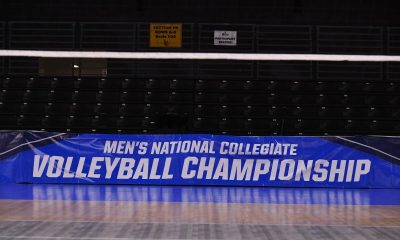
 Sports3 weeks ago
Sports3 weeks ago2025 NCAA men’s volleyball championship: Bracket, schedule, scores
-
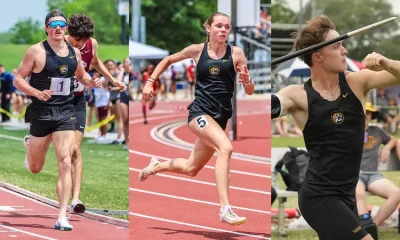
 Sports3 weeks ago
Sports3 weeks agoBarnes, Lippert and Smeal Set School Records at APU Franson Meet
-

 Youtube3 weeks ago
Youtube3 weeks agoAnthony Edwards’ Top 10 Plays of the 2023-24 NBA Regular Season! #BESTofNBA
-

 NIL3 weeks ago
NIL3 weeks ago2025 NCAA Softball Tournament bracket, schedule revealed
-
Sports3 weeks ago
Beach volleyball pairs championship: Day one — The
-

 Motorsports3 weeks ago
Motorsports3 weeks agoLayne Riggs (Bed Cover) Disqualified From Second-Place
-

 Youtube3 weeks ago
Youtube3 weeks agoDISRESPECTFUL!
STEPHEN A. CALLS OUT LEBRON for Giannis and NBA eras comments
| First Take
-
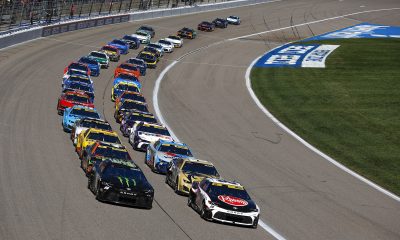
 Motorsports3 weeks ago
Motorsports3 weeks agoNASCAR Delivers Blow To Two Cup Teams After Pre-Race Inspections In Kansas

































